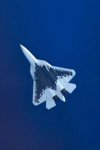What a beauty 

Russia's Zvezda publishes first air-to-air footage of the latest Su-57 (and Su-30SM) shot from the ramp of an An-12 transport (HT @jetcitystar): https://t.co/qBWtAirdFi
— Thomas Newdick (@CombatAir) November 7, 2018










